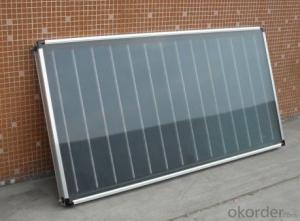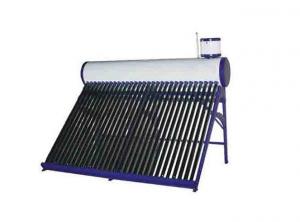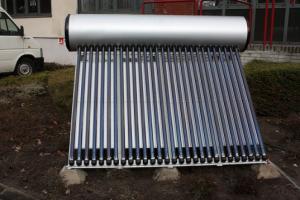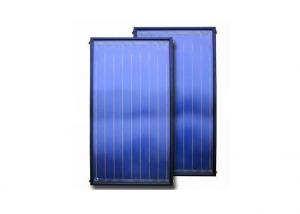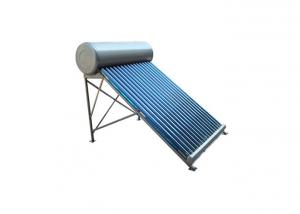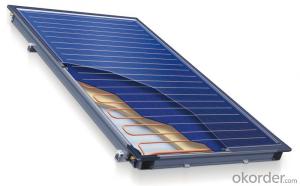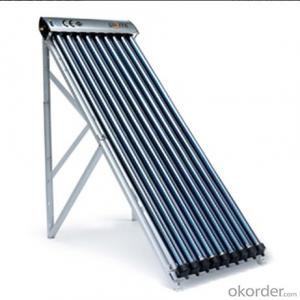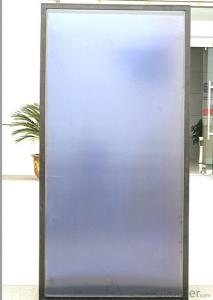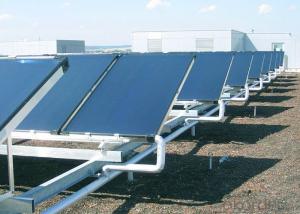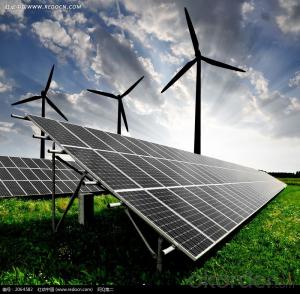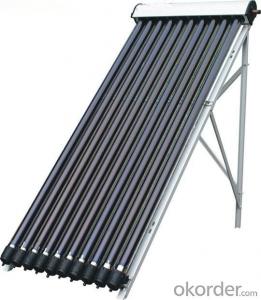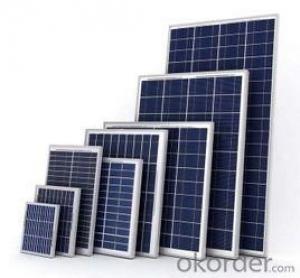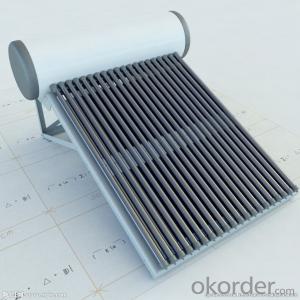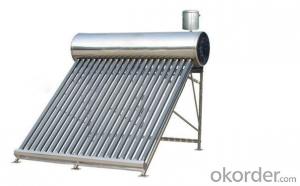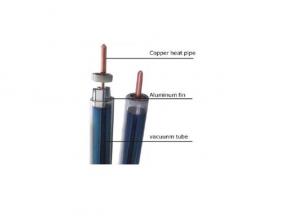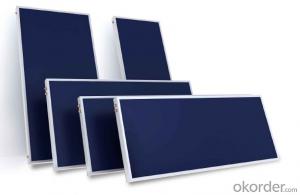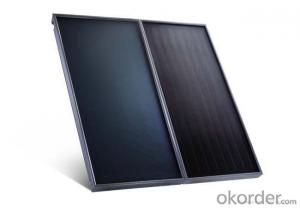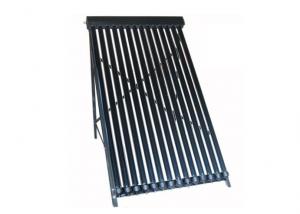Hot Water Solar Collectors - CNBM 2024 Hotel Solar Thermal Collector with 15 Year Warranty for Vacuum Tube
- Loading Port:
- Shanghai
- Payment Terms:
- TT OR LC
- Min Order Qty:
- 500 pc
- Supply Capability:
- 10000 pc/month
OKorder Service Pledge
Quality Product, Order Online Tracking, Timely Delivery
OKorder Financial Service
Credit Rating, Credit Services, Credit Purchasing
You Might Also Like
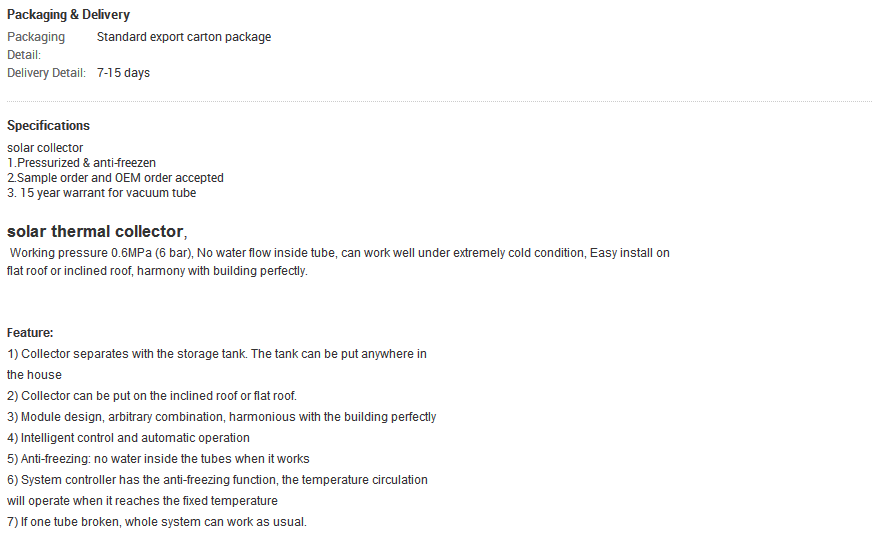

- Q: Can solar collectors be used for heating data centers?
- Yes, solar collectors can be used for heating data centers. Solar thermal systems can capture and convert sunlight into heat energy, which can then be used to warm up the air or water that circulates within the data center. This can help reduce the reliance on traditional heating methods and contribute to the sustainability and energy efficiency of the data center operations.
- Q: Solar collectors and tank water can not cycle what is the reason
- pipeline loop problem. If there are other piping behind the pump, pay attention to other pipeline valve opening and closing situation
- Q: Can solar collectors be used for generating electricity on smartwatches?
- No, solar collectors are typically not suitable for generating electricity on smartwatches due to their limited surface area and the relatively high power demands of electronic devices like smartwatches.
- Q: Are solar collectors suitable for both residential and commercial use?
- Yes, solar collectors are suitable for both residential and commercial use. They can be installed on rooftops or ground-mounted, making them adaptable to various property types. Solar collectors provide a sustainable and cost-effective way of generating electricity or heating water, making them a viable option for both residential homes and commercial buildings.
- Q: How much energy can solar collectors generate?
- Solar collectors can generate a significant amount of energy if properly designed and utilized. The amount of energy that solar collectors can generate depends on several factors such as the size and efficiency of the collectors, the available sunlight, and the location of the collectors. On average, solar collectors can generate around 1,000 kilowatt-hours (kWh) of electricity per year for every square meter of collector area in ideal conditions. However, this can vary widely depending on geographical location and weather patterns. In regions with abundant sunlight and minimal shading, solar collectors can generate even more energy. For example, in sunny regions like the southwestern United States, solar collectors can generate up to 2,000 kWh per year for every square meter of collector area. It is important to note that solar collectors not only generate electricity but can also produce hot water for residential or commercial use. The amount of hot water that solar collectors can generate depends on the size of the system and the specific needs of the user. In conclusion, solar collectors have the potential to generate a significant amount of energy, ranging from 1,000 to 2,000 kWh per year per square meter of collector area. This renewable energy source can contribute to reducing reliance on fossil fuels and mitigating the impact of climate change.
- Q: What is the effect of shading on solar collectors?
- The effect of shading on solar collectors is a significant reduction in their overall energy production. Shading prevents direct sunlight from reaching the surface of the solar collectors, which hinders their ability to convert solar radiation into usable electricity or heat. As a result, shaded areas on solar collectors experience decreased efficiency and output, ultimately compromising the overall performance of the system. It is crucial to minimize shading to maximize the energy yield and effectiveness of solar collectors.
- Q: Can solar collectors be used for desalination?
- Yes, solar collectors can be used for desalination. Solar thermal desalination systems use sunlight to heat water, producing steam that is then condensed to create fresh water. This process is efficient and environmentally friendly, making solar collectors a viable option for desalination projects.
- Q: Can solar collectors be used for refrigeration?
- Yes, solar collectors can be used for refrigeration. Solar thermal energy can be harnessed and converted into cooling power using absorption refrigeration systems. These systems use solar collectors to heat a working fluid, which then drives a refrigeration cycle to produce cold temperatures for cooling purposes. This sustainable and efficient technology is especially beneficial in areas with abundant sunlight and high cooling demands.
- Q: Can solar collectors be used for generating electricity on electric vehicle charging stations?
- Yes, solar collectors can be used for generating electricity on electric vehicle charging stations. Solar collectors, such as solar panels, can be installed on the roofs or in the vicinity of charging stations to harness solar energy and convert it into electricity. This solar-generated electricity can then be used to power the charging stations and charge electric vehicles. This not only provides a renewable and environmentally friendly source of electricity but also reduces the reliance on the traditional power grid. Additionally, solar collectors can be integrated with energy storage systems to store excess solar energy for later use, ensuring a continuous and reliable power supply for electric vehicle charging stations.
- Q: Can solar collectors be used for generating electricity on tablets?
- Solar collectors, also referred to as solar panels, cannot be utilized directly on tablets to generate electricity. The purpose of solar collectors is to convert sunlight into usable electrical energy. Nonetheless, tablets lack the essential infrastructure to support solar panels and convert the generated electricity into a viable form. Tablets typically depend on rechargeable batteries or power cords to fulfill their energy requirements. Although portable solar chargers exist, capable of generating electricity to charge tablets, they are not integrated into the tablet's design.
Send your message to us
Hot Water Solar Collectors - CNBM 2024 Hotel Solar Thermal Collector with 15 Year Warranty for Vacuum Tube
- Loading Port:
- Shanghai
- Payment Terms:
- TT OR LC
- Min Order Qty:
- 500 pc
- Supply Capability:
- 10000 pc/month
OKorder Service Pledge
Quality Product, Order Online Tracking, Timely Delivery
OKorder Financial Service
Credit Rating, Credit Services, Credit Purchasing
Similar products
Hot products
Hot Searches
